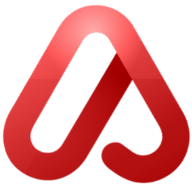The world of data is vast and ever-expanding, with websites serving as a treasure trove of information. Web scraping, the process of extracting data from websites, has become an essential tool for businesses and individuals alike. However, traditional web scraping methods often face challenges such as website changes, anti-bot measures, and the need for complex coding. Enter AI, a game-changer that is revolutionizing the way we extract data from the web.
Leveraging AI for Efficient Data Extraction
AI, particularly large language models (LLMs), has emerged as a powerful tool for web scraping. These models excel at understanding and processing text, making them ideal for extracting specific information from web pages. Here’s how AI is transforming web scraping:
- Simplified Data Extraction: AI can analyze HTML code and identify the relevant elements containing the desired data. This eliminates the need for manual coding and allows for quicker and more efficient data extraction.
- Adaptability to Website Changes: Traditional web scraping methods often require manual updates to accommodate website changes. AI-powered scrapers, on the other hand, can adapt to these changes dynamically, ensuring consistent data extraction even as websites evolve.
- Bypass Anti-Bot Measures: Websites often implement measures to prevent automated scraping. AI can help overcome these measures by mimicking human behavior or using advanced techniques to bypass detection.

Two Powerful AI Techniques: Text-Based and Vision-Based Scraping
AI offers two primary approaches to web scraping: text-based and vision-based. Each approach has its strengths and weaknesses, making them suitable for different use cases.
Text-Based Web Scraping: Harnessing the Power of LLMs
Text-based web scraping leverages LLMs to analyze the textual content of a web page and extract the desired information. This approach is effective when the data is clearly presented in text format.
- Process: The LLM analyzes the HTML code and identifies the relevant text elements based on keywords, tags, and context. It can then extract the specific data points based on user instructions.
- Advantages:
- Cost-Effective: Text-based scraping can be more cost-effective than vision-based scraping, especially for simple web pages with well-defined data structures.
- Versatile: It can extract a wide range of data types, including text, numbers, and dates.
- Disadvantages:
- Limited to Textual Data: It cannot extract data from images or other non-textual elements.
- Vulnerable to HTML Changes: Website changes can affect the accuracy of text-based extraction, requiring adjustments to the AI model.
- Limited to Textual Context: It may struggle with data that is presented visually or requires understanding of visual cues.
Vision-Based Web Scraping: Seeing Beyond the Text
Vision-based web scraping utilizes AI models trained to understand images. This approach is particularly effective for extracting data from websites that rely heavily on visual elements or have complex HTML structures.
- Process: The AI model analyzes a screenshot of the webpage and identifies the desired data points based on their visual characteristics. This allows for extraction of data even if it is not clearly defined in the HTML code.
- Advantages:
- Visual Data Extraction: It can extract data from images, charts, graphs, and other visual elements.
- Robust to HTML Changes: It is less affected by website changes, as it relies on visual cues rather than specific HTML structures.
- Understanding Visual Context: It can understand the visual context of the data, allowing for more accurate extraction.
- Disadvantages:
- Costly: Vision-based scraping can be more expensive than text-based scraping due to the computational resources required for image processing.
- Potential for Errors: AI models are still under development, and vision-based extraction may occasionally produce inaccuracies or misinterpretations.
Choosing the Right Approach: A Comparative Analysis
The choice between text-based and vision-based web scraping depends on the specific needs of the user. Consider the following factors:
- Data Complexity: For simple web pages with clearly defined data structures, text-based scraping is often sufficient. However, for complex web pages with visual elements, vision-based scraping may be necessary.
- Website Changes: Vision-based scraping is more robust to website changes, making it a better choice for websites that are frequently updated.
- Cost: Text-based scraping is generally more cost-effective than vision-based scraping.
The Future of Web Scraping: A Symbiotic Relationship between AI and Humans
AI is transforming web scraping, offering powerful tools for extracting data from the web more efficiently and effectively. However, it’s important to remember that AI is not a replacement for human expertise. The most successful web scraping solutions will combine the strengths of both AI and human intelligence.
- AI for Automation: AI can automate repetitive and time-consuming tasks, allowing humans to focus on more strategic and creative endeavors.
- Human for Validation and Interpretation: Humans can validate the accuracy of AI-extracted data and interpret the results in a meaningful context.
The future of web scraping lies in a symbiotic relationship between AI and humans, where AI empowers us to gather data more efficiently and effectively, while humans provide the crucial context and interpretation needed to make sense of the information. As AI continues to evolve, we can expect even more innovative solutions to emerge, making web scraping even more powerful and accessible for everyone.

